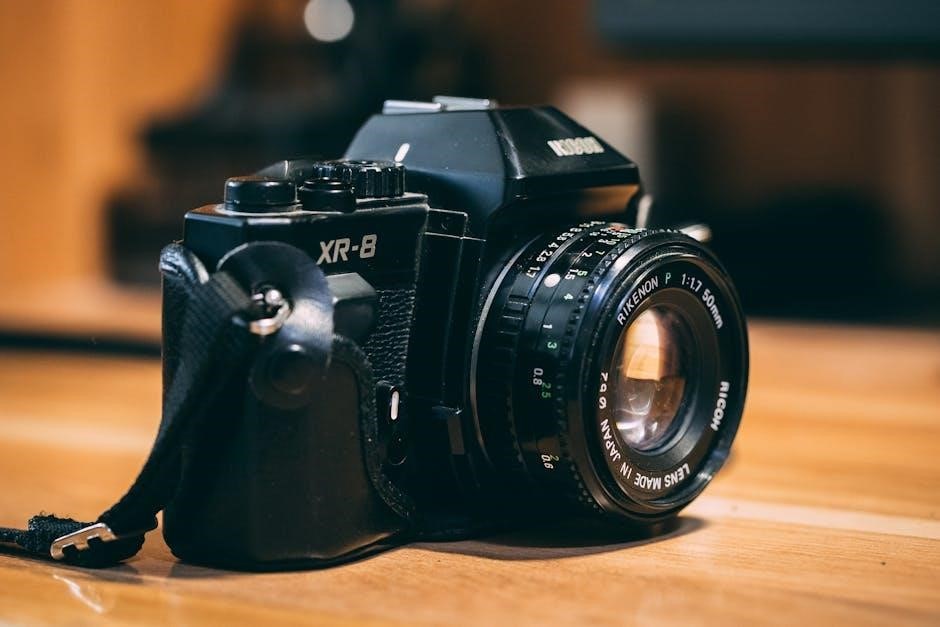
The Nikon D7100 manual is a comprehensive guide designed to help users master the camera’s features, settings, and troubleshooting. It caters to both beginners and advanced photographers, providing detailed insights into unlocking the camera’s full potential for exceptional photography experiences.
Overview of the Nikon D7100 Camera
The Nikon D7100 is a high-performance DSLR camera designed for enthusiasts and professionals. Featuring a 24.1MP DX-format CMOS sensor, it delivers sharp images with excellent low-light performance. The camera boasts a weather-sealed body, 51-point autofocus system, and full HD video capabilities. Its intuitive controls and customizable settings make it versatile for various photography styles, ensuring creativity and precision in every shot.
Importance of Understanding the Manual
Understanding the Nikon D7100 manual is essential for unlocking the camera’s full potential. It provides detailed insights into the camera’s features, controls, and settings, enabling users to optimize their photography experience. From mastering autofocus to customizing shooting modes, the manual serves as a vital guide for both beginners and advanced photographers. It also helps troubleshoot common issues and ensures efficient use of the camera’s advanced capabilities, enhancing creativity and precision in every shot.
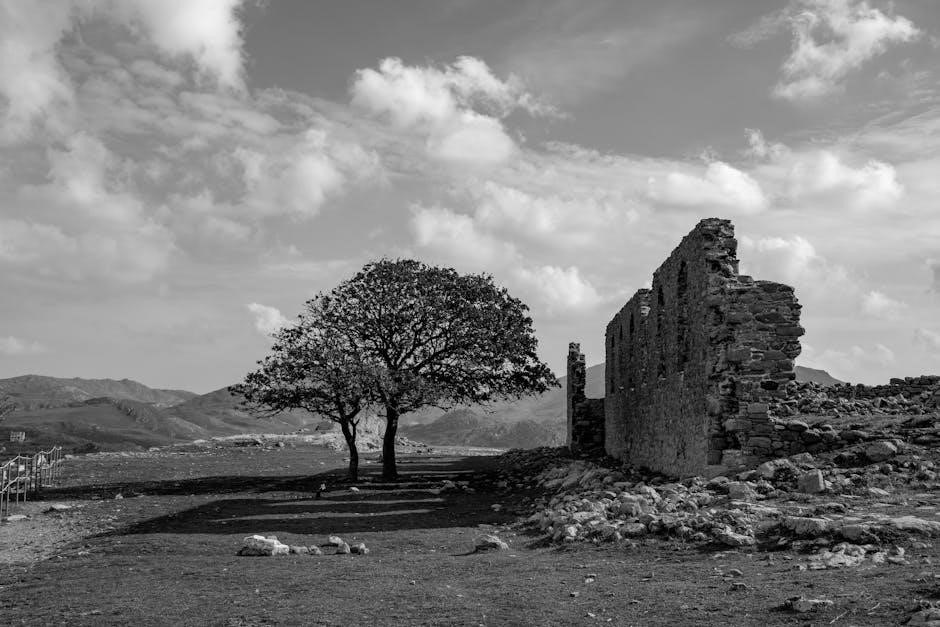
Key Features of the Nikon D7100
The Nikon D7100 boasts a 24.1MP DX-format CMOS sensor, 51-point autofocus, weather-sealed body, and 1080p HD video recording, making it a powerful tool for photographers.
Design and Build Quality
The Nikon D7100 features a durable magnesium alloy body with weather-sealed construction, ensuring protection against dust and moisture. Its ergonomic design provides a comfortable grip, while the intuitive layout of controls enhances usability. The camera’s build quality is robust, making it suitable for both professional and enthusiast photographers in various shooting conditions. Its compact yet sturdy frame ensures reliability and longevity, making it a reliable choice for capturing high-quality images consistently.
24.1 Megapixel DX-Format CMOS Sensor
The Nikon D7100 is equipped with a 24.1-megapixel DX-format CMOS sensor, delivering high-resolution images with exceptional detail and color accuracy. This sensor captures a wide dynamic range, ensuring vibrant colors and subtle tonal variations. Its design without an optical low-pass filter enhances sharpness, making it ideal for landscape, portrait, and wildlife photography. The sensor’s performance is optimized for both stills and video, providing photographers with a versatile tool for creative expression.
51-Point Autofocus System
The Nikon D7100 features a highly advanced 51-point autofocus system, offering precise and rapid subject tracking. With 15 cross-type sensors, it excels in capturing sharp images of moving subjects, even in challenging lighting conditions. The system allows for customizable AF modes, including dynamic-area AF and 3D tracking, ensuring versatility for various photography scenarios; This robust autofocus capability makes it ideal for capturing action, wildlife, and sports photography with superior accuracy and reliability.
Weather-Sealed Body
The Nikon D7100 boasts a weather-sealed body, designed to withstand harsh environmental conditions. Its magnesium alloy top and rear covers provide exceptional durability, while seals around buttons and compartments protect against dust and moisture. This feature ensures reliable performance in outdoor and challenging settings, giving photographers confidence to shoot in adverse weather without compromising image quality. The weather-sealed design enhances the camera’s versatility and longevity, making it a robust tool for professional and enthusiast photographers alike.
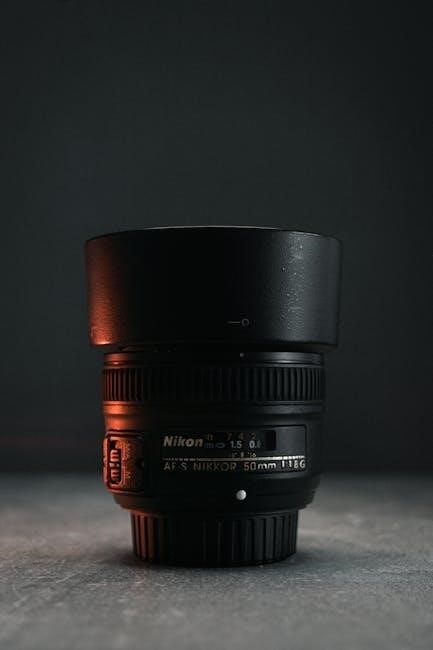
Controls and Buttons
The Nikon D7100 features strategically placed buttons and dials, designed for intuitive access to key settings. Ergonomic design ensures quick adjustments, enhancing shooting efficiency and creative control during photography sessions.
Top Panel Controls
The top panel of the Nikon D7100 includes essential controls for quick access during shooting. The mode dial allows selection of various exposure modes, while the ISO button enables rapid adjustments to sensitivity. The exposure compensation button is conveniently located for fine-tuning brightness. Additionally, the shutter release is strategically placed for comfortable operation, ensuring smooth and responsive photography sessions. These controls are designed to enhance workflow efficiency, allowing photographers to focus on capturing moments seamlessly. Their intuitive layout simplifies navigation, making the camera user-friendly for both professionals and enthusiasts alike. The top panel reflects Nikon’s commitment to ergonomic design, prioritizing functionality and ease of use for an optimal shooting experience. By organizing frequently used settings within easy reach, the D7100 streamlines the creative process, enabling photographers to concentrate on composition and artistic expression without unnecessary distractions. This thoughtful arrangement ensures that the camera adapts to the photographer’s needs, fostering productivity and precision in every shot. Overall, the top panel controls embody the balance between form and function, delivering a seamless and satisfying user experience.
Back Panel Layout
The Nikon D7100’s back panel features a 3.2-inch LCD screen with 1,228,800 dots for crisp image preview and menu navigation. Below the screen, the multi-selector and OK button enable quick menu navigation and focus point selection. The live view button and info button are positioned for easy access, while playback and delete buttons simplify image management. Zoom in/out buttons and the “i” button provide additional functionality. This layout ensures intuitive control, allowing photographers to adjust settings and review images efficiently. The back panel’s design prioritizes ergonomics, making it easy to access essential functions during shooting sessions.
Customizable Buttons
The Nikon D7100 offers customizable buttons, allowing photographers to tailor controls to their preferences. The multi-selector, OK button, and other programmable buttons can be configured for quick access to frequently used functions like ISO, white balance, or autofocus modes. This feature enhances shooting efficiency and personalizes the camera experience, making it ideal for photographers who want to streamline their workflow and optimize their shooting process.
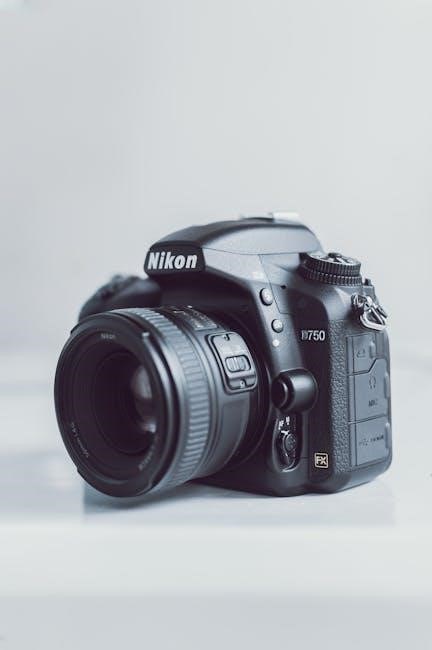
Shooting Modes
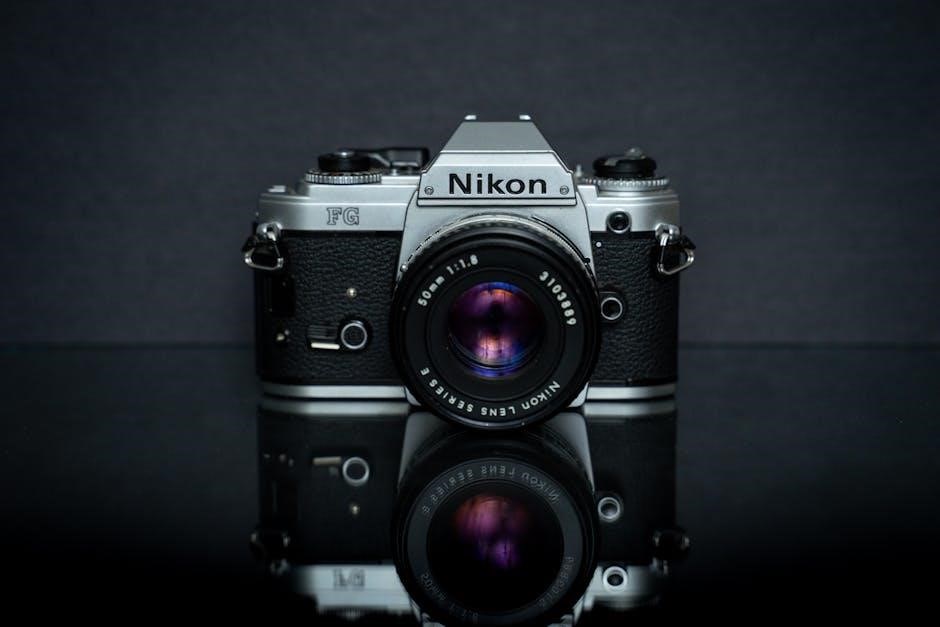
Shooting Modes
The Nikon D7100 offers various shooting modes to suit different photography needs, including Auto Mode, Scene Modes, Manual Mode, Aperture Priority, and Shutter Priority. These modes provide flexibility for capturing diverse subjects and lighting conditions, catering to both novice and advanced photographers.
Auto Mode
Auto Mode simplifies photography by automatically adjusting settings like aperture, shutter speed, and ISO for optimal results. Ideal for beginners or quick shots, it ensures well-balanced exposure without manual adjustments. The camera analyzes the scene and selects the best settings, making it user-friendly. While it limits creative control, it’s great for capturing spontaneous moments. Users can still adjust basic settings like image quality and white balance. A built-in flash also activates automatically in low-light conditions for better results.
Scene Modes
Scene Modes optimize camera settings for specific shooting scenarios like Portrait, Landscape, Sports, and more. Each mode adjusts parameters to enhance results, such as prioritizing faces in Portrait or vivid colors in Landscape. Available in Auto and Manual modes, Scene Modes simplify capturing unique effects without complex adjustments, offering creative control for various photography situations while maintaining ease of use for photographers of all skill levels.
Manual Mode (M)
Manual Mode (M) offers complete control over exposure settings, allowing photographers to independently adjust aperture, shutter speed, and ISO. This mode is ideal for experienced users seeking precise control over their shots. It enables creative freedom to achieve desired effects, such as freezing motion or creating motion blur. The D7100’s metering system assists in finding the right balance, ensuring optimal results in various lighting conditions for professional-quality images.
Aperture Priority (A/Av)
Aperture Priority (A/Av) mode allows users to set the desired aperture, while the camera automatically adjusts the shutter speed. This mode is ideal for controlling depth of field, enabling photographers to isolate subjects or ensure sharpness across the frame. It offers creative flexibility, particularly in portrait and landscape photography, while maintaining optimal exposure. The D7100’s advanced metering system ensures accurate results, making it a versatile choice for various shooting scenarios and lighting conditions.
Shutter Priority (S/Tv)
Shutter Priority (S/Tv) mode lets you set the shutter speed, with the camera adjusting the aperture automatically. This mode is perfect for capturing motion, allowing you to freeze fast-moving subjects or create artistic blur. It’s ideal for sports, wildlife, and creative photography. The D7100’s advanced metering system ensures balanced exposure, while the adjustable shutter speed offers precise control over the visual effects of motion in your images.
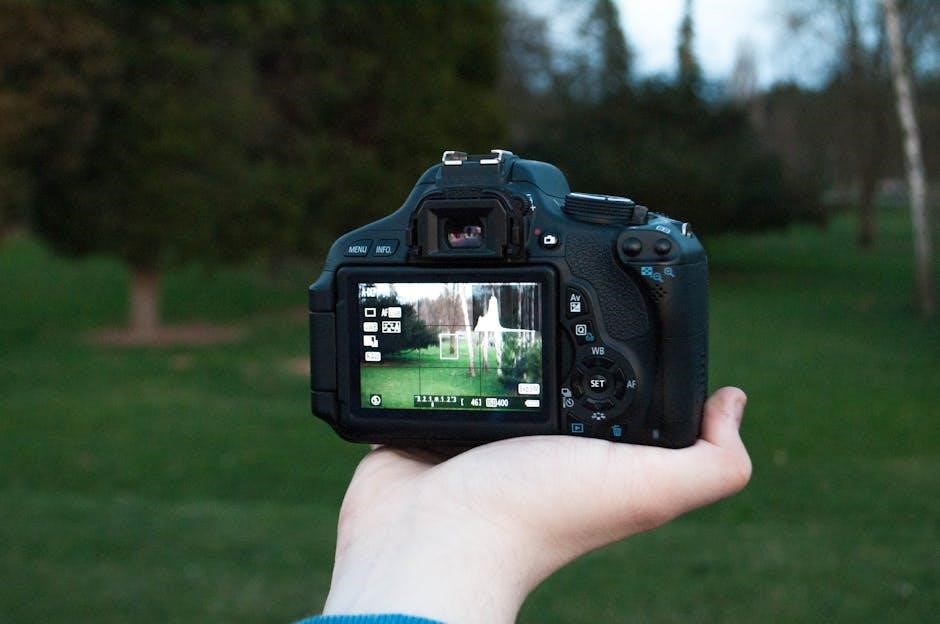
Customization Options
The Nikon D7100 offers extensive customization options via its Custom Settings menu, enabling users to tailor camera behavior. Picture Control allows precise color and contrast adjustments, while autofocus customization enhances flexibility for different shooting scenarios, optimizing performance.
Custom Settings Menu
The Nikon D7100’s Custom Settings menu offers extensive personalization options, allowing users to tailor the camera to their preferences. This menu provides access to various settings, such as autofocus fine-tuning, metering modes, and bracketing options. Photographers can customize camera behavior to suit their shooting style, enhancing creativity and efficiency. The menu is organized into categories, making it easy to navigate and adjust settings like exposure, ISO, and white balance. This feature is particularly beneficial for advanced users seeking precise control over their photography tools.

Picture Control Settings
The Nikon D7100’s Picture Control settings allow users to customize image parameters such as sharpness, contrast, and color saturation. These settings enable photographers to achieve their desired aesthetic without extensive post-processing. Standard, Neutral, Vivid, and other predefined styles are available, with options to fine-tune and save custom profiles. This feature is particularly useful for photographers seeking consistent looks across their work or experimenting with creative visual styles. Adjustments are easily accessible via the camera’s menu system, ensuring efficient workflow and enhanced image quality.
Autofocus Customization
The Nikon D7100 offers advanced autofocus customization, allowing photographers to tailor AF settings to their preferences. The 51-point AF system can be fine-tuned for dynamic area AF, focus tracking, and AF-C priority. Users can customize AF modes, such as focusing on specific subjects or adjusting sensitivity. These settings enhance focus accuracy and personalize the camera’s behavior for various shooting scenarios, ensuring sharp and precise results in diverse conditions.
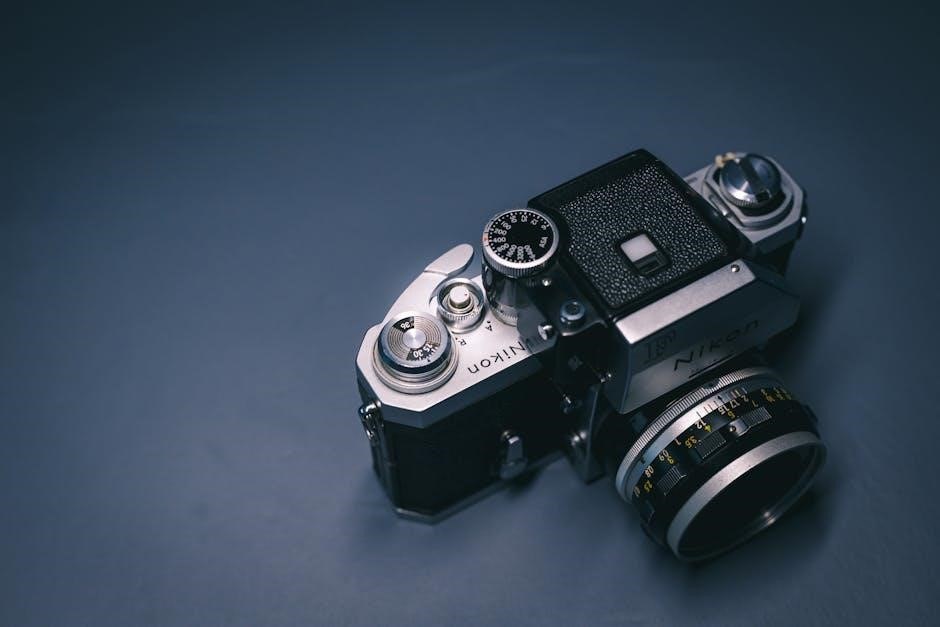
Image Quality and File Formats
The Nikon D7100 delivers exceptional image quality with support for NEF (Raw) files, fine-tuned JPEG settings, and color space options, ensuring precise control over your photography output.
NEF (Raw) Files
NEF (Raw) files capture all the data from the Nikon D7100’s sensor, offering maximum flexibility in post-processing. These uncompressed files retain full image details, allowing for precise adjustments to exposure, white balance, and color. Shooting in Raw is ideal for professional photographers who require high-quality images and want to maintain creative control during editing. The D7100 supports 12-bit or 14-bit Raw formats, ensuring rich tonal ranges and vibrant colors.
JPEG Settings
The Nikon D7100 allows users to customize JPEG settings, including image quality, size, and compression. These settings are accessible via the Shooting Menu, enabling photographers to balance file size and image detail. Higher quality settings are ideal for professional work, while lower settings reduce file size but may compromise image detail. This feature is particularly useful for photographers needing efficient storage without sacrificing significant quality.
Color Space Options
The Nikon D7100 offers two color space options: sRGB and Adobe RGB. sRGB is ideal for web use, ensuring consistent colors across digital platforms. Adobe RGB provides a wider color range, suitable for professional printing and editing. These settings, accessible via the Shooting Menu, allow photographers to tailor their workflow to specific needs, ensuring optimal color reproduction for various creative projects.
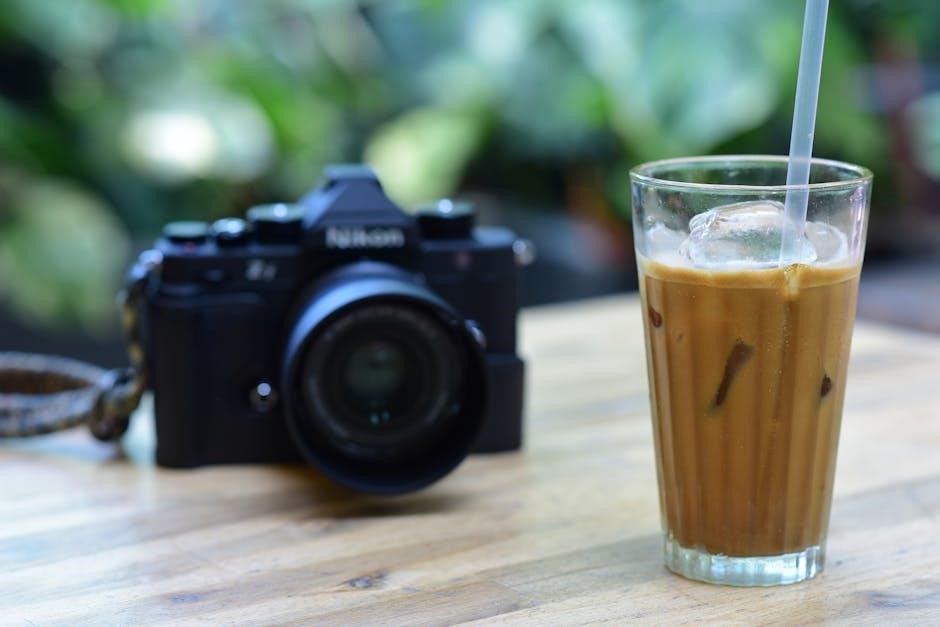
Video Capabilities
The Nikon D7100 supports 1080p Full HD video recording, offering frame rates up to 60p for smooth motion. Manual controls enable precise adjustments, while external microphone support enhances audio quality.
1080p Full HD Video Recording
The Nikon D7100 captures stunning 1080p Full HD videos at frame rates up to 60p, ensuring smooth motion and high clarity. This feature is ideal for recording dynamic scenes, sports, and wildlife. The camera also offers manual controls, allowing users to adjust settings like aperture, shutter speed, and ISO during filming for creative flexibility. Additionally, the D7100 supports external microphone input, enhancing audio quality for professional-grade video production.
Manual Video Controls
The Nikon D7100 offers advanced manual video controls, allowing users to adjust aperture, shutter speed, and ISO during filming. This feature provides creative flexibility, enabling precise control over exposure and depth of field. By switching to manual mode, photographers can achieve professional-grade video results, fine-tuning settings to match their artistic vision. This capability makes the D7100 a versatile tool for videographers seeking enhanced control over their footage.
External Microphone Support
The Nikon D7100 supports external microphones, enhancing audio quality in video recording. By connecting an external microphone, users can reduce ambient noise and capture clearer sound. This feature is particularly useful for professionals and enthusiasts aiming for high-quality audio to complement their video footage. The camera’s microphone input allows for greater control over sound, ensuring a more immersive and professional media production experience.
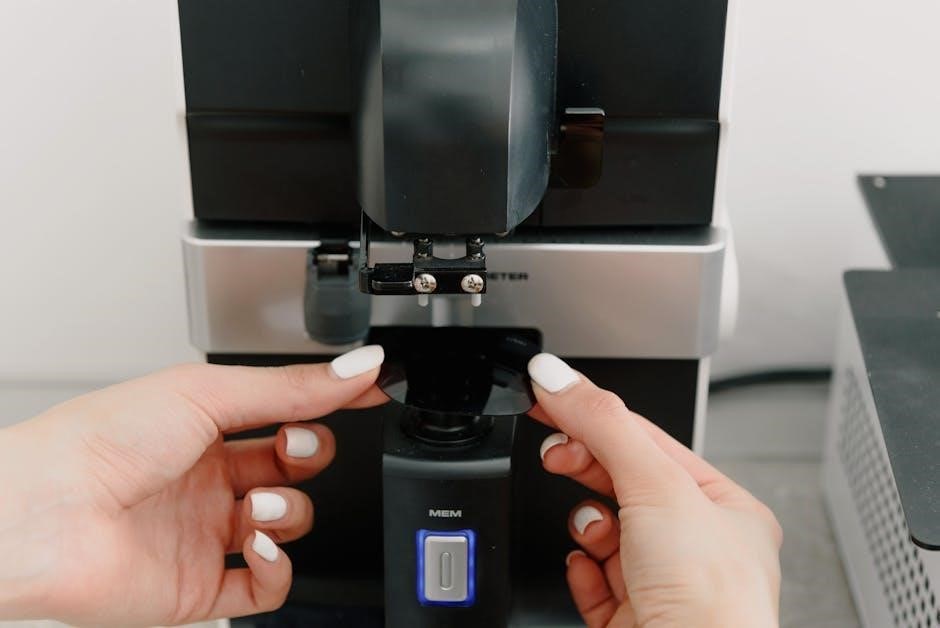
Connectivity and Accessories
The Nikon D7100 offers versatile connectivity options, including Wi-Fi support for wireless image transfer and remote camera control. Compatible with external flashes and accessories, it enhances functionality.
Wi-Fi and Wireless Mobile Utility
The Nikon D7100 supports Wi-Fi connectivity, enabling seamless wireless transfer of images to compatible devices. Using Nikon’s Wireless Mobile Utility app, users can remotely control the camera, adjust settings, and preview shots on their smartphone or tablet. This feature enhances convenience for sharing photos and streamlines the workflow during shoots. It ensures a stable connection and is compatible with both iOS and Android platforms, making it versatile for various users. This functionality is particularly useful for photographers who need to share images quickly or work in collaborative environments. Additionally, the app allows for intuitive control, reducing the need for physical access to the camera, which can be beneficial in certain shooting scenarios. Overall, the Wi-Fi and Wireless Mobile Utility app significantly improves the D7100’s connectivity and usability, offering a modern and efficient solution for photographers on the go.
External Flash and Speedlight Compatibility
The Nikon D7100 is compatible with a wide range of external flashes and Speedlights, enhancing its versatility in various lighting conditions. It supports Nikon’s Creative Lighting System, enabling advanced wireless flash control. Compatible Speedlights include the SB-400, SB-600, and SB-900, offering options for both amateur and professional photographers. The camera’s hot shoe and wireless capabilities allow for seamless integration of external lighting solutions, providing greater creative control and improving image quality in low-light environments; This feature is particularly beneficial for photographers seeking to expand their lighting setups for studio or location shoots.
Remote Shutter Release
The Nikon D7100 supports remote shutter release, allowing photographers to take photos without physically touching the camera. This feature minimizes camera shake, ensuring sharper images, especially in low-light or long-exposure situations. Compatible accessories like the MC-DC2 cable release or the ML-L3 infrared remote enable this functionality. Remote shutter release is ideal for tripod-based shooting, macro photography, or when working in environments where camera stability is crucial. It enhances control and precision, making it a valuable tool for professional and enthusiast photographers alike.
Maintenance and Troubleshooting
Maintenance involves regular cleaning of the sensor and lens to ensure optimal image quality. Firmware updates keep the camera functioning smoothly. Troubleshooting common issues like error messages or connectivity problems can be addressed through the manual or online support resources. Proper care extends the camera’s lifespan and performance, ensuring reliable operation during photo sessions.
Cleaning the Sensor and Lens
Regular cleaning of the sensor and lens is essential for maintaining image quality. Use a soft-bristle brush or bulb blower to remove dust. Avoid touching the sensor surface. For stubborn spots, a specialized cleaning solution and swabs can be used. Always turn off the camera and remove the battery before cleaning. Proper care prevents smudges and debris from affecting photos. Refer to the manual for detailed cleaning procedures to ensure safe and effective maintenance.
Firmware Updates
Firmware updates enhance camera performance, fix issues, and add features. Check the current firmware version in the camera menu and compare it with Nikon’s official website. Download the latest version from Nikon’s support site and follow on-screen instructions for installation. Ensure the camera is fully charged and avoid interruptions during the update process to prevent damage. Regular updates ensure optimal functionality and security for your Nikon D7100.
Common Issues and Solutions
Common issues with the Nikon D7100 include error messages, sensor cleaning problems, and battery drain. For error messages, refer to the manual or reset settings. Clean the sensor regularly using the camera’s built-in cleaning mode or manual methods. Battery drain can be minimized by disabling unnecessary features like Wi-Fi. Additionally, some users report issues with the camera’s clock battery, which may require replacement. Always consult the manual or Nikon support for troubleshooting guidance.
Mastering the Nikon D7100 requires practice and exploration of its advanced features. Continuous learning and experimenting with settings will enhance your photography skills and creativity.
Mastering the Nikon D7100
Mastering the Nikon D7100 requires a deep understanding of its features and settings. By practicing and experimenting with modes like Manual, Aperture Priority, and Shutter Priority, you can unlock its full potential. Customization options, such as personalized buttons and autofocus settings, allow for tailored photography experiences. Regular firmware updates and sensor maintenance ensure optimal performance. Continuous learning through the manual and real-world application will help you achieve professional-grade results and enhance your creative vision.
Continuous Learning and Improvement
Continuous learning is key to fully utilizing the Nikon D7100’s capabilities. Exploring resources like the Nikon Club, firmware updates, and guides such as “Nikon D7100 For Dummies” can deepen your understanding. Regularly updating your skills and staying informed about new features ensures you maximize the camera’s potential. Experimenting with different modes and settings, along with community support, fosters growth and enhances your photography skills over time.